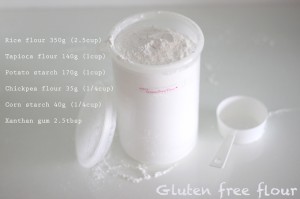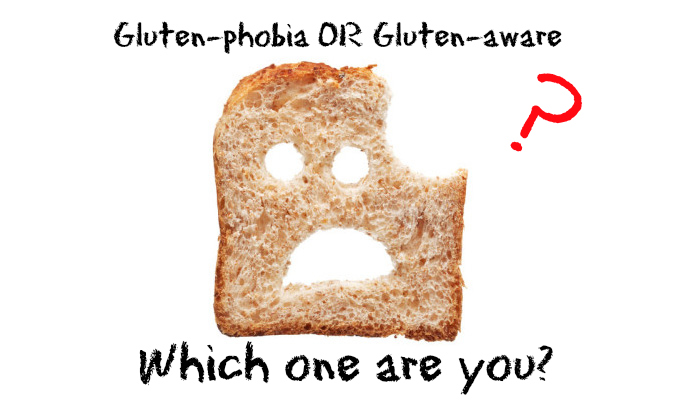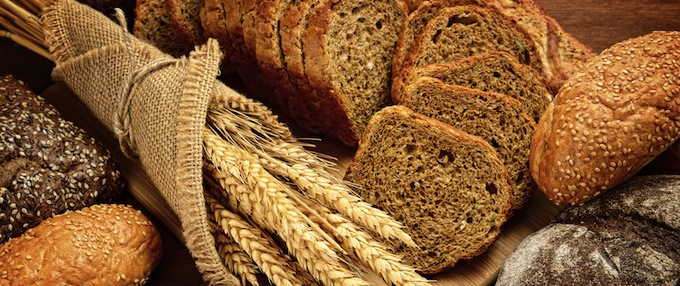What is “Gluten”?
Gluten is a sticky, stretchable protein found in grains like wheat, barley, oats, and rye. Most of us unknowingly love it, because gluten gives our favorite foods that special touch: It makes pizza dough stretchy, gives bread its spongy texture, and is used to thicken sauces and soups. Even your soy souse contains gluten!
To people with a chronic digestive disorder called celiac disease, gluten is truly evil: Their bodies regard even a tiny crumb of it as a malicious invader and mount an immune response. Problem is, this immune reaction ends up damaging the small intestine, which causes both great gastrointestinal distress and nutritional deficiencies. If untreated, these responses can then lead to intestinal cancers as well as complications such as infertility and osteoporosis.
Now another problem is emerging, and experts are referring to it as nonceliac gluten sensitivity. Gluten sensitivity can lead to similar celiac symptoms such as stomach cramps, diarrhea, and bloating. But unlike celiac, sensitivity doesn’t damage the intestine. Study shows that celiac disease is affecting one in 133 Americans. However, with increased testing and awareness, more people realized why they felt sick after eating a piece of bread, and food companies discovered a new market. Experts are beginning to acknowledge that it may affect as many as 20 million Americans.
The gluten myth
Gluten-free diet has become smashingly well-known over past couple years, and there’s the idea that a gluten-free existence is the ticket to speedy weight loss. But, says Mark DeMeo, M.D., “there’s nothing magical about a gluten-free diet that’s going to help you lose weight.” What’s really at work: Gluten-free dining can seriously limit the number of foods you can eat. With fewer choices, you’re a lot less likely to overeat”.
Gluten-free doesn’t mean fat-free or calorie-free.
Without gluten to bind food together, food manufacturers often use more fat and sugar to make the product more palatable. Consider pretzels: A serving of regular pretzels has about 110 calories and just one gram of fat. Swap them for gluten-free pretzels and you could get 140 calories and six grams of fat.
Should you go Gluten-Free?
If you have celiac disease or gluten sensitivity, the answer is easy: Yes, you have to. But if you are one of them and think going gluten-free is “cool”, you need to start over and go back reading this article from the beginning again.
It’s a giant pain in the butt to give up all gluten in your diet. Giving up gluten may sound as basic as cutting out bread or eating less pasta, but this isn’t just another version of the low-carb craze. Because gluten makes foods thick and tasty, it is added to everything from salad dressing to soy sauce to seasonings.
Besides the hassle, you can end up with serious nutritional deficiencies. Gluten-free doesn’t necessarily equal healthy, especially when people yank vitamin-enriched and wholegrain foods from their diets and replace them with gluten free brownies. In fact, research suggests that those who forgo gluten may be more likely to miss out on important nutrients such as iron, B vitamins, and fiber.
This is where careful meal planning comes in, which may explain why some people feel so good when they go gluten- free: They’re eating real food instead of ultraprocessed packaged fare. If you skip the gluten-free goodies and focus on fruits, vegetables, lean protein, dairy, and gluten free grains like amaranth and quinoa, this can be a very healthy way of eating.
Be “gluten-aware”. Not “gluten-phobia”
All the health blogs and media have been raving about gluten-free diet and I think it might make people misunderstand things sometimes. Have you noticed that you see “Gluten-Free” labels on pretty much everything at grocery stores lately? I even saw it on rice the other day and laughed. I mean, it’s rice. There is no gluten whatsoever. It’s just beneficial for food industry companies to label “Gluten-Free” today because there are so many people like them thinking it’s better for them.
All I want to share today is that we shouldn’t be “gluten-phobia”. We should be more “gluten-aware”.
Try my flour!
If you were like me who has a little gluten sensitivity, or even curious in gluten-free cooking and baking, try my gluten-free flour recipe to spice up your diet. It actually taste as similar to regular flour, and it might be interesting for you to try!



Leave a Reply